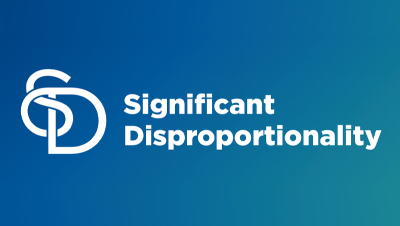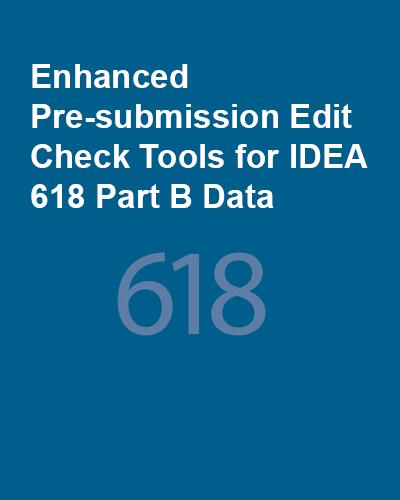
Resource Library
Guides. Briefs. Toolkits. Quick reference information. IDC and its partners created these data quality resources to help states better prepare to address their existing or emerging IDEA data quality needs. Use our search and filtering tools to navigate the library.
Resources 1 - 7 of 11
This video on Assessment details the participation and academic achievement information for students with and without disabilities on statewide assessments. This is one of a series of videos that provide high-level introductions to the data states must report as part of Section 618 of IDEA.
Format: Quick Reference
Significant Disproportionality ResourcesThe Equity in IDEA regulations require states to determine annually if local education agencies (LEAs) are identified with significant disproportionality. The regulations outline specific requirements related to methods for identifying LEAs and activities the LEAs must complete after they are identified. These significant disproportionality resources can assist states with implementing these requirements and supporting LEAs through the process of meeting the requirements.
Format: Toolkits
Success Gaps Toolkit: Addressing Equity, Inclusion, and OpportunityThe Success Gaps Toolkit presents a process for using data and the Success Gap Rubric to identify root causes of gaps between groups of children in districts or schools. These success gaps occur when the education system is not meeting the needs of all groups of children and outcomes for some groups are different than outcomes for most groups. The toolkit, with its process and materials, provides a manageable and defined way for districts or schools to identify success gaps that are present and their root causes and then make a plan for addressing the gaps. The success gaps may be the graduation rate of students who are English learners compared to the rate of all other children, the out-of-school suspension rate of children who are Black compared to the rate of all other children, the identification of children who are Hispanic as children with specific learning disabilities compared to the identification of all other children, and other gaps.
Format: Guides and Briefs
Success Gaps Rubric: Addressing Equity, Inclusion, and OpportunityThis rubric allows a team of users from a district or school to systematically examine the root causes of success gaps among groups of students by focusing on equity, inclusion, and opportunity. The recently updated rubric now includes considerations for children as young as preschool age. A complementary white paper provided the research-based background that supported development of the rubric.
Format: Guides and Briefs
Statewide Assessment: Indicator 3 Measurement Changes From FFY 2019 to FFY 2020–2025This resource offers a side-by-side comparison of the SPP/APR Part B indicator measurement tables for FFY 2019 and FFY 2020 to highlight new SPP/APR reporting requirements and measurement changes to Indicator 3. The majority of students with disabilities participate in regular statewide assessments, and a small percentage of students with the most significant disabilities participate in alternate assessments. In FFY 2020, OSEP requires states to disaggregate statewide assessment results for these two groups of students with disabilities (i.e., those who participate in the regular assessment and those who participate in the alternate assessment). OSEP also requires states to calculate a “proficiency rate gap” between students with and without disabilities who participate in the regular statewide assessment.
Format: Applications and Spreadsheets
Coordinated Early Intervening Services (CEIS) Fiscal and Student Data TrackerThe Coordinated Early Intervening Services (CEIS) Fiscal and Student Data Tracker is a set of four tools SEAs can use with their districts, schools, and providers to assist them in tracking the finances, services, and student data associated with CEIS. IDC and CIFR produced the CEIS Tracker. The resource also includes an instructions document or user's guide for more information about when and how to use the CEIS Tracker.
Format: Applications and Spreadsheets
SEA Edit Check and Data Display Tools for IDEA 618 Part B DataIDC presents the SEA Edit Check and Data Display Tools for IDEA 618 Part B Data to help states prepare their Part B data submissions. States can use these tools to review the contents of their IDEA 618 EDFacts Part B personnel, exiting, discipline and child count and educational environment data for children ages 3–5 (FS089) and students ages 6–21 (FS002) prior to submission to the EDFacts Submission System or ESS. The tools apply edit checks and identify potential errors in subtotals or totals in the data files. In addition, the tools provide user-friendly summaries of the 618 data. The tools are enhanced versions of the SEA Edit Check and Data Display Tools for personnel, exiting, discipline, and child count and educational environment data. The main difference is the enhanced edit check tools require states to directly copy and paste the EDFacts data files they will submit to ESS as opposed to manually entering data into an Excel file in a format that is different than the one required for submission to ESS.







